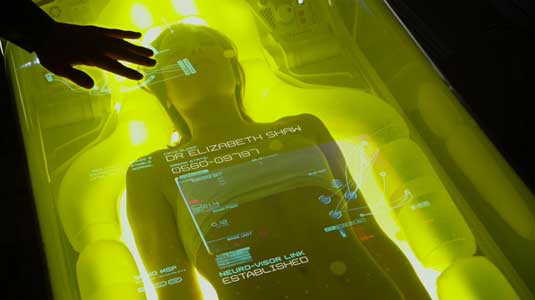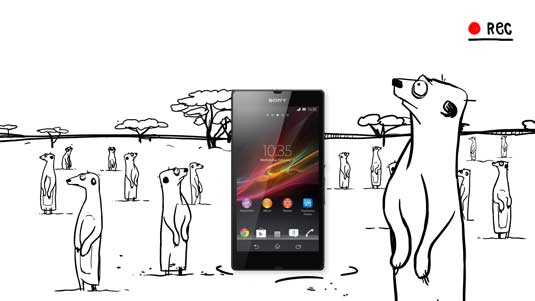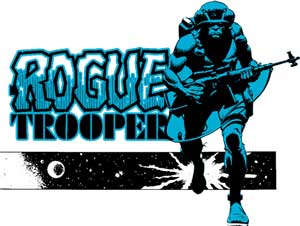7 ways to ensure your showreel stands out from the crowd
This article is brought to you in association with Masters of CG, a new competition that offers the chance to work with one of 2000AD's most iconic characters. There are big prizes to be won, so enter today!
To get a job in animation, 3D or visual effects, you need a killer showreel. But what that means from the point of view of the people who actually watch them may surprise you.
Here we speak to people at a number of leading studios to find out what they're looking for, what's likely to turn them off or annoy them - and how you can present your work in a way that will make them want to meet you...
01. Look to the future as well as the past

A showreel should contain your best-ever work - shouldn't it? David Sheldon-Hicks, creative director, motion at independent London agency Territory, says that's not necessarily always the case. Instead, he says, the most important thing is to only show the work you want to continue doing.
"Sometimes people feel the need to show absolutely everything," he explains. "So there's a risk that I see something you did for a cool brand but not necessarily the kind of style you're into any more.
"If that's the case, drop it off the reel. I only want to put people on projects that they'll enjoy and I can only gauge that by the type of work they have on their reel."
This is when personal projects can become very useful, he adds. "Maybe it's a style that you've not had the chance to work on professionally but you'd love to in the future. Make it and share it and more than likely you'll end up working on more projects like that."
Daily design news, reviews, how-tos and more, as picked by the editors.
02. Be honest about what you did

It's tempting to cheat - but you will be found out, says Carine Crespin, head of multitasking direction-VFX at French animation and VFX studio Blackmeal. "Only show what you actually worked on," she proclaims. "Otherwise we will catch you at the demo reel stage or at the interview stage - I promise!"
Sheldon-Hicks concurs, adding: "It's vital to be honest about how far your involvement in certain projects went. It's obvious when a piece of work doesn't match your experience or expertise and creates doubt around an individual's abilities.
"Whenever possible, show shots that only you worked on, or maybe chapter it under 'design/art direction', '2D animation', '3D characters', or whatever your things are.
03. Work out what your strengths lie

A showreel needs to tell a story, and the story here is your personal style - so first you need to decide what that is, says Maggie Rogers, creative director at Fred and Eric, a London design and animation agency specialising in stop-frame and character animation.
"When we watch a reel we want to know where that person's strengths and passion lie," she explains. "So be clear on your style and what you do best. If a reel features an incoherent range of visual styles, it's really hard to know what that person is actually good at. Know your strengths and don't fill in the gaps with work you're not completely happy with."
The team at London animation studio Mummu concur: "It's often hard when straight out of uni, but it can sometimes look like you are short of work if you have cut up one piece of work and spread it throughout the reel. So be critical and highlight the best bit that shows who you are; a character designer or animator, motion graphics artist or director. Rarely is one person great at everything."

If technical skills are not your strength, don't worry: that may not be what the employer is looking for. "When we hire people, we're not looking for specialists as we train our employees to be proficient in every aspect of VFX," Pierre Buffin, founder of French visual effects studio BUF, points out.
"I'll also consider artistic flare over technical proficiency. I'm just as likely to take an art school grad as a VFX one if I think they've got what it takes… it's that artistic eye that makes the difference," he adds.
04. Explain what you've done
"It is often difficult to know what an artist's part was in a job/video," says Carine Crespin. "A description of what you have done on various pieces really helps, especially for 3D whether you're the animator, rigger, modeler or designer etc.
"Always make clear what position you had, and what you have done. For example, for animation/rigging we like looking at the job itself without any render job added if possible."
05. Choose your music carefully

A showreel isn't just about the visuals of course. Sound is just as important, especially if you're using music, something of which Maggie Rogers heartily approves. "A great edit to engaging music will create structure for a showreel," she says.
"A track which varies in pace and has a build helps to keep an edit interesting. Bunching together similar work, matching punch points in the track with visuals, and being clever with snappy cuts and transitions are just a few things that can help to maintain a flow which will keep the viewer engaged."
But don't fall into the trap of choosing music you like - think about what the person viewing it will like instead. As Mummu put it: "We know it's really tempting to use your favorite song, but not everyone is as in into folk music, death metal or dub step as you are - and it can make people click stop!"
Crespin recommends: "Discreet music or simple beat/music." Also she also admits: "We always turn the sound off before looking at a reel."
06. Spend time on opening/closing frames
You might not think that the opening and closing frames are important, but ask yourself how important a book cover is in your decision to buy it. As Mummu put it: "Don't let your amazing animations and designs be taken down by bad typography and poor layouts on still opening and closing frames." Enough said.
07. Keep it short

It's the most important advice for anyone compiling a showreel, and it rings loud and clear from every studio we spoke to.
As Ingi Erlingsson, co-founder and creative director of animation production company Golden Wolf puts it: "Keep it short and strong. The point of a reel is to help sell you and your talents, if you include anything other than your best bits, then it might not work to it's best ability.
"A great 45 second reel will do far more good than a mediocre three minute one and creatives have short attention spans, so be ruthlessly selective about what you include."
Similarly Mummu recommend you keep the reel to "a minute, minute and a half max. Leave people wanting more and hopefully wanting to watch it again."
"We often know within the first 10-20 seconds if the person is what we are looking for, so grab our attention at the start, keep us interested but don't lose us at 45 seconds showing us filler."

Sheldon-Hicks adds to the consensus. "Keep the showreel really short," he says. "I'll often only have time to view the first 60 seconds to make a decision so I'd definitely suggest opening on your very best work.
"If I have the time and the work is great I'll watch through until the end (hopefully no longer than two minutes). This sounds incredibly harsh, but when we can sometime receive 20 or more applications a day, and we have a policy of getting back to everyone, it's important to make good first impressions."
Blackmeal's Crespin is at one with this view. "A shorter version with your best jobs is always better than a long one. One minute is perfect. More than two minutes is a bad idea." Her advice: "Take all you like best and remove half of it."
Rogers can't help but agree. "Any more than about 1:30, even the best reel would start to lose my attention," she says. "We see so many reels, sometimes we don't get past the first 30 seconds before we make a judgement."
Should you send a showreel?

One final point comes courtesy of Ed Barrett, creative director at London animation studio Animade: a showreel may not always be the most appropriate way to show off your skills.
"Demo reels are great for an overview," he says, "but despite having their uses, we strongly prefer being able to see an individual piece of animation. The individual study of character animation and seeing an ability from artists to emote and create the correct emotion from that piece is far more meaningful.
"You don't get this from reels - it's almost a trailer or music video for the film, there's no time to connect. It's not to say they don't have a place or their uses but personally we prefer seeing individual pieces of work.

"When we are recruiting we ask candidates to produce a simple walk cycle or short looping animation - you get a much deeper understanding of their animation expertise, what their capable of and their creative thinking - we feel that is much more valuable than seeing an overly edited piece of work which has their favourite music track laid over.
"We'd pay more attention to links to Vimeo where we can see their grad films or shorter looping pieces of animation so we can see something complete with more substance."
Win a trip to SIGGRAPH!

Masters of CG is an exciting new competition for EU residents that offers you the one-in-a-lifetime chance to work with one of 2000AD's most iconic characters: Rogue Trooper.
We invite you to form a team (of up to four participants) and tackle as many of our four categories as you wish - Title Sequence, Main Shots, Film Poster or Idents. For full details of how to enter and to get your Competition Information Pack, head to the Masters of CG website now.
Enter the competition today!

Tom May is an award-winning journalist specialising in art, design, photography and technology. His latest book, The 50 Greatest Designers (Arcturus Publishing), was published this June. He's also author of Great TED Talks: Creativity (Pavilion Books). Tom was previously editor of Professional Photography magazine, associate editor at Creative Bloq, and deputy editor at net magazine.
